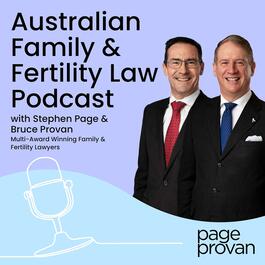
The Future of Fertility: Inside the New Assisted Reproductive Technology Act (QLD)
Send us a text In this episode, Award Winning Surrogacy Lawyer, Stephen Page discusses the new Assisted Reproductive Technology Act in Queensland. Introduction The introduction of the Assisted Reproductive Technology Act in Queensland marks a significant milestone in the landscape of reproductive rights and donor conception. As someone personally invested in this journey through surrogacy and egg donation, the implications of this legislation resonate deeply. The Importance of Transparency During the debate surrounding the new act, it became clear that many donor-conceived individuals and their parents grapple with uncertainty about their origins. This emotional gap often leaves them yearning for answers that, until now, have been difficult to obtain. A key feature of the new act is the establishment of a donor conception information register. This central registry, managed by the Registrar of Births, Deaths, and Marriages, will allow donor-conceived people to trace their genetic heritage with more transparency and oversight, beginning in 2026. Changes to Assisted Reproductive Processes The act"s passage also brings forth changes to the licensing of IVF clinics and adjusts protocols to streamline the use of assisted reproductive treatments. Since it came into effect, there have been notable instances illustrating the act"s immediate impact. For example, just days after its introduction, new procedures were implemented allowing for sperm retrieval from deceased or unresponsive individuals, signifying a more compassionate approach to this delicate matter. Ongoing Adjustments and Future Prospects Though many parts of the act have commenced, some provisions are still pending implementation, set for 2025 and beyond. The anticipated licensing changes for IVF clinics hinge on forthcoming state elections, which underscores the evolving nature of reproductive legislation. The potential establishment of a comprehensive register in 2026 is expected to significantly improve the informational landscape for donor-conceived individuals. Conclusion The Assisted Reproductive Technology Act represents hope for many seeking clarity and connection to their biological history. As the provisions roll out over the coming years, the impact on families across Queensland is bound to be profound, fostering a new era of support and understanding in assisted reproduction and donor conception.
From "Australian Family and Fertility Law"


Comments
Add comment Feedback